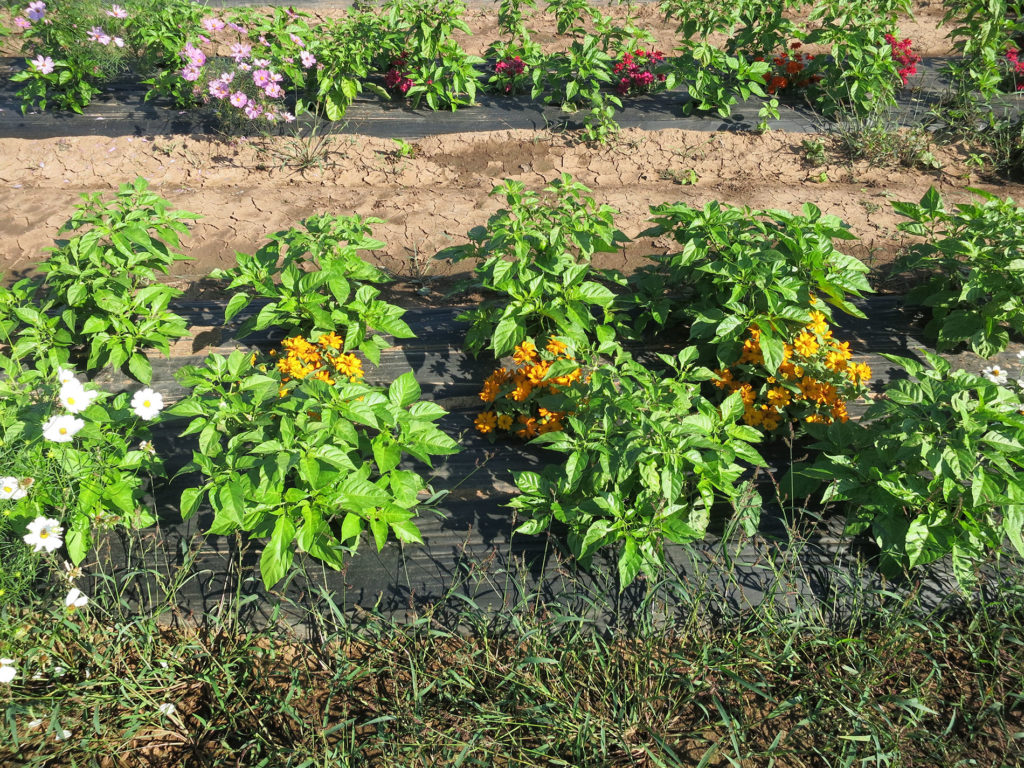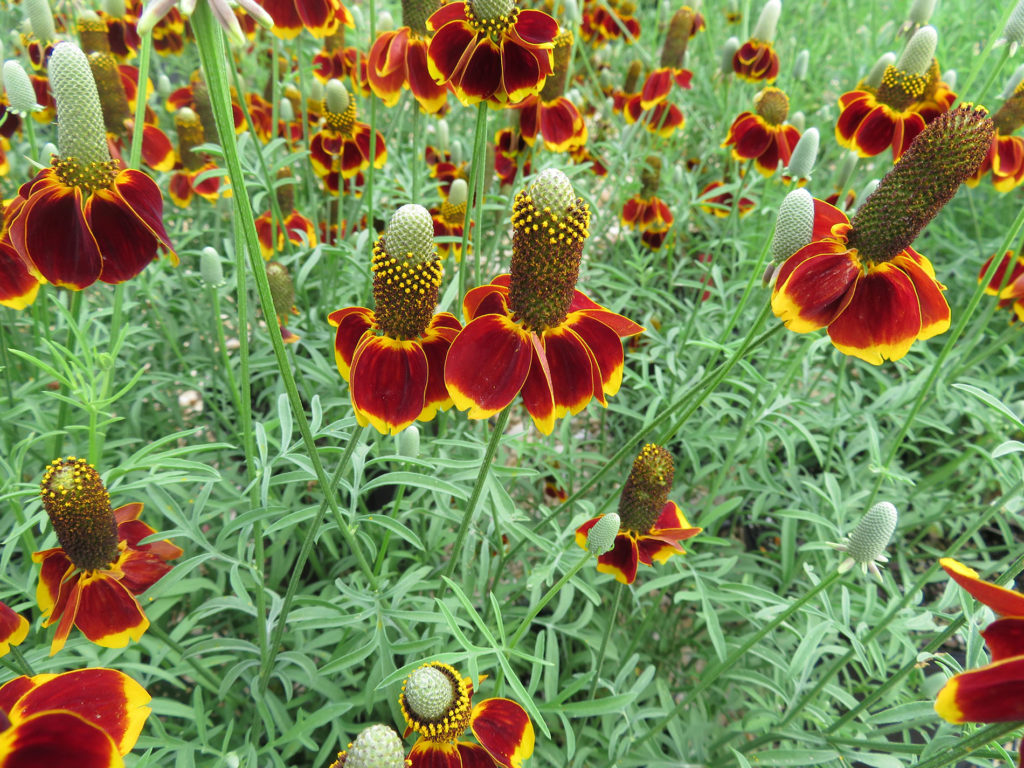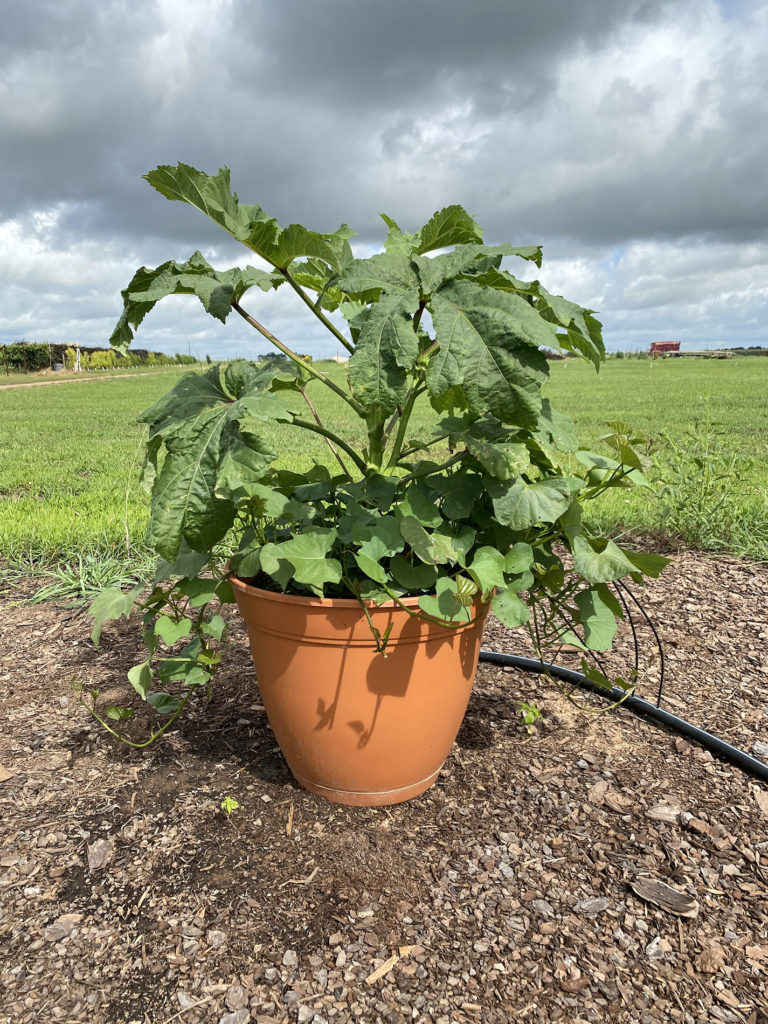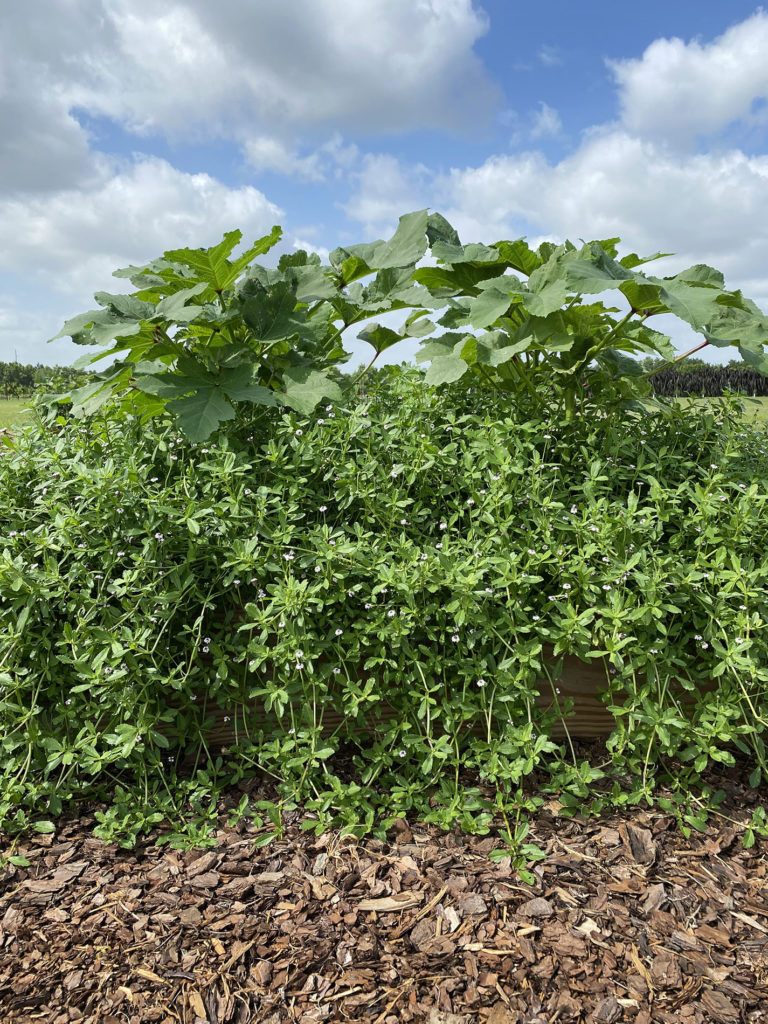Benefits of pollinator-attracting companion plants
Research, teaching and extension intersection identifies a simple way to improve crop yields
A recent interdisciplinary research project about how pollinator-attracting companion plants help increase yield in some horticulture crops showcases the intersection of excellence when researchers from diverse fields combine research, teaching and extension efforts to solve scientific questions. That is one of the greatest strengths of Texas A&M AgriLife — the incredible breadth of its faculty in the College of Agriculture and Life Sciences.
Research: Interdisciplinary team approach is the key

What started with the intent to find alternative uses for some of our native wildflowers and developing those as potential commercial crops, blossomed into so much more, said Michael Arnold, Ph.D., professor of landscape horticulture in the Department of Horticultural Sciences and director of The Gardens at Texas A&M University.
“We became interested in how these plants attract pollinators and support pollinator populations. Could the wildflowers be used not only as a beautiful addition to the landscape but also attract pollinators? If grown close to or as companion plants to growing vegetables or fruits, could we pair some of our usual annual flowers and perennial flowers with vegetable crops or fruit crops to enhance their yield?”
Former horticultural sciences doctoral student John Montoya, Ph.D., used plantings of cucumbers and habanero peppers to study these and other questions pertaining to how various planting techniques and growing conditions could affect pollination and crop yield of seasonal plants.
For example, how do you economically justify allocating field space to flowers and ornamentals while not reducing the overall crop yield? Planting permanent rows of perennial plants adjacent to the crops creates a habitat for pollinators and other beneficial predators or insects all year. Intermixing annuals within the rows allows you to take the annuals out with the crop and not decrease the total space used by the vegetable crops. The studies also focused on learning what kinds and how many pollinators visited the plantings and did they differ according to the season or crop.

Arnold assembled an interdisciplinary team from across the College to support Montoya’s research:
Horticultural experts: Arnold’s specialty is ornamentals. Larry Stein, Ph.D., professor and associate head for Texas A&M AgriLife Extension Service programs in the Department of Horticultural Sciences, offered expertise in vegetable crops and selections for Texas growing conditions.
Entomology experts: Juliana Rangel, Ph.D., director of the Texas A&M Honey Bee Laboratory and associate professor of apiculture in the Department of Entomology, is an expert in pollination, bees and honey bees. She helped set up the experimental design typically used for pollinator studies. Karen Wright, Ph.D., associate curator of the Texas A&M Insect Collection in the Department of Entomology, specializes in native bee biology, curation and identification. She helped researchers and students identify and curate the specimens they collected to look at biodiversity or the number of species and individual pollinators that came to each type of plant.
Agriculture economics experts: Marco Palma, Ph.D., professor and director of the Human Behavior Laboratory in the Department of Agricultural Economics, and Charles Hall, Ph.D., professor and Ellison Chair in International Floriculture, contributed a marketing perspective, helped to calculate the costs associated with various treatment combinations and what it all meant in terms of profit or yield and aided students with survey work for consumer analysis.
“This project was the perfect example of how faculty from different departments in the College can come together to address novel questions about specific systems and produce something exciting and impactful,” said Rangel.
Looking at production functions from an economic perspective involves targeted considerations.
“In this particular problem, we looked at the production cost of using these pollinator companions to determine whether the yields generated really made up in terms of an increase in quantity,” Palma said. “We also sought to identify if there were any adverse effects in quality and to understand if we needed to account for any other factors.”
Montoya’s research found that the yield of peppers and some cucumbers did increase whether using annuals or perennials. In many cases, these yields offset the use of land for the perennial plantings — a win-win situation since enhanced yields can increase profitability. Increased profits can offset the costs of using pollinator-attracting companion plants. Ecosystem benefits associated with improved pollinator habitat and food sources also increase.
Teaching: Research results inspire more student-led projects
Data from Montoya’s study led to other questions that became a series of student-led projects.
“People from research, teaching and extension areas came together to foster the success of Dr. Montoya’s project,” Arnold said. “It also resulted in useful information that then led to the next series of questions we answered. That’s the whole point of science.”
Three projects that resulted from the questions include:
— Zinnia hybrids. Zinnias, often considered an effective pollinator-attractor, did not perform well in Montoya’s project. Danielle Merrell, an undergraduate student majoring in horticulture and entomology, studied commercial varieties of zinnias to find out why.
“She found interesting traits about the levels of ultraviolet fluorescence, color hues, nectar guides and size traits in the flowers,” said Rangel. “She also compared the pollinator visits to those flowers to correlate which flower types increase pollinator visitations.”
Arnold said the zinnia hybrid used in the original research project was selected for its disease and pest resistance. Merrell’s study showed that, when observed under ultraviolet light, the floral nectaries of this hybrid had a more jumbled pattern than the well-defined ones of the cultivars that pollinators visited often. Her research identified better zinnia cultivars to select if you want to attract pollinators. A paper she wrote on her findings has been submitted to a peer-reviewed journal.

— Wildflower selection. Selecting the best specimens of native plants that attract pollinators also became a research focus. Kaitlin Hopkins, a doctoral student in horticultural sciences, studied Mexican Hat or tall coneflower, a native wildflower in Texas. She found it to be a strong candidate for use as an ornamental plant with pollinator-attracting properties. Palma and Hall were advisors for the consumer survey work on the project. Brent Pemberton, Ph.D., a regents fellow in floriculture at the Texas A&M AgriLife Center at Overton, helped assess commercial viability relative to current bedding plant production practices.
— Container plantings for urban areas. Horticultural sciences doctoral candidate Jonathan Caples investigated if Montoya’s findings are applicable in urban environments. To do so, he developed modular units of containers of varying sizes for a balcony, patio or backyard setting. Some of the pre-assembled units included combinations of vegetables and pollinator-attracting plants, while others were designed for consumers to buy the individual components for a do-it-yourself project. The largest unit is a 4-foot by 4-foot raised-bed garden; the smallest is a 10-gallon container suitable for a patio or balcony.
He worked with different combinations of vegetables and pollinator-attracting plants for both winter and summer plantings to find the best ones to attract pollinators when fruits and vegetables are flowering at the same time as the pollinator-attracting plants. He also worked with Hall on surveys to determine consumer preferences, such as whether they prefer a certain kind of vegetable crop or ornamental and what they would be willing to pay. Could the agriculture industry produce such a product and sell it at a profit?
“Understanding what the consumer wants and then trying to go back in the supply chain to provide those products is easier than growing what we like and then trying to find a market for it,” said Palma. “It is crucial to know what the demand drivers are to better adapt our production practices and everything else to satisfy that demand.”
Caples continues to field test the potential for using these modular units in urban environments and verify pollinator-mediated yield impacts.
Undergraduate student workers and student volunteers involved in these projects learned about plot and statistical design setup — scientific techniques associated with collecting various types of data. With these research opportunities, they were able to apply what they learned in their classes to a real-world setting, and accomplished projects with results that are relevant to consumers and industry.
Extension: Getting information to consumers and industry
Whether a homeowner growing plants for their backyard or a commercial operation making an operational decision, consumers expect science-based information established by data and evidence. Studies such as the projects Montoya, Hopkins and Caples led, and the resulting undergraduate student participation, inform industry experts about best practices and translate research impacts.
Montoya’s dissertation paper, “Pollinator-attracting Companion Plantings Increase Crop Yield of Cucumbers and Habanero Pepper,” was published in the American Society for Horticultural Science, ASHS, peer-reviewed journal, HortScience. It received the ASHS Outstanding Extension Publication Award for papers published in 2020. The selection committee is comprised of scientists, educators and extension personnel in ASHS.
Arnold said the award reflects the relevance and quality of the research coming from the College of Agriculture and Life Sciences.
“A highly integrated network of people came together to accomplish goals none of us could accomplish individually,” Arnold said. “That’s the point of interdisciplinary work. Texas A&M AgriLife has such diverse resources of expertise, it’s hard to think of an agriculture-related topic where we couldn’t call on the capabilities of people in various departments to collaborate and find a solution.”
— 30 —





